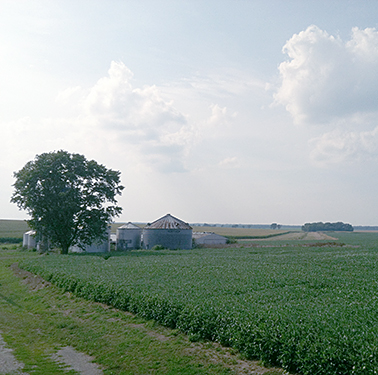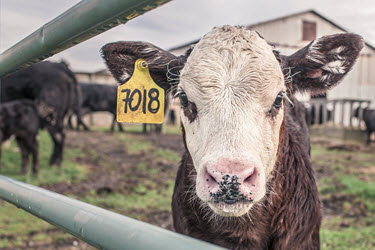THE OPEN
- March beans: 2 lower
- March meal: .40 lower
- March soyoil: 2 higher
- March corn: 3 higher
- March wheat: 13 higher
Prices opened as expected with the soy complex still lower against a higher grain market. Wheat continued to remain well supported by the announcement of a still lower wheat crop from Australia and higher values from the EU. Meal prices started the day lower but found good commercial pricing activity and short-covering courtesy of a near record short position. Oilshare was steady as soyoil held key lows for the first part of the day, and beans came back to trade both sides of unchanged.
Wet weather in the US continues to factor into a positive trade as more corn shorts took the opportunity to get something covered up. Localized flooding issues is a stark reminder of the growing problems last year as prices head into the early planting season just a few weeks away. The strong US dollar should have been a weight around the market, as it approached 2-year highs, but for the day it was all about lower world wheat production and new corn shorts from last week covering something in.
At 10:00 export inspections were released as follows:
- beans: 992,294 MT vs. 640,240 MT wk ago
- wheat: 501,990 MT vs. 567,349 MT wk ago
- corn: 795,228 MT vs. 788,549 MT wk ago
Inspections were good for beans and neutral to positive for grains.
SOY
The soy complex traded both sides during the trading session, even as prices worked to the downside at the start of the trading day. March soyoil continued to congest inside its 3040c-31c trading range until the NOPA report was released, while meal found support from commercial pricing activity and short-covering. March beans started the day by breaking into key support just under $8.90 which held for a better bounce as beans followed grains higher. May crush traded higher to 90.32c/bu while oilshare was firmer at 34.23%. The July/Nov bean spread was steady trading from a 6c carry out to 7 3/4c. March/May meal firmed into $5.20 from $5.70. Seems like the soy complex remains skeptical of Chinese announcements as prices seemed to struggle to stay afloat for most of the trading session. China will drop tariffs on nearly 700 products for import including key ag items such as beans and pork. The gov. will accept applications for import starting March 2, and will be approved as long as the imported goods "are based on market and commercial principles." Currencies continued to be negative for beans with a higher US dollar ongoing against a Brazilian currency that was trading 1% lower. Growing Brazilian production figures and a weak Real helped to cap off a better bean rally. At 11:00 the Jan. NOPA report was bearish for soyoil, while a near record short in meal created more profit-taking in oilshare. March soyoil broke through key support at 3040c, (as nearing prices at that level continuously seemed to be a foreshadowing of events to come), and a break through the 200 day sent prices tumbling towards 30c. Jan crush came in above expectations at 176.94 mbu vs. Dec at 174.81 mbu, while oil stocks came in at 2.013 bln lbs, vs. 1.757 bln in Dec.
GRAINS
Wheat and corn prices remained firm today on short-covering in corn and fresh buying in wheat. Flooding concerns in the south continued to support corn, as did a very strong wheat market. March wheat/corn traded from 1.73 3/4c to 1.77 1/4c. Spreads were also firmer with July/Dec getting a boost to 2 1/2c from 3 3/4c. Concerns over an early planting season and still good exports vie against a 2020 outlook for much larger acreage. March/May corn firmed into 3 1/2c from 4 1/2c. Wheat found its inverse again with March/May trading up to 3 1/4c from 3/4c. Corn inspections exceeded expectations today, and was the highest they have been for 19/20. Nonetheless, exports are still behind the pace needed to meet the USDA's projection of 1.725 bbu. After the 12:00 hour, wheat prices took another step higher, up 23c towards the upper portion of the trading range, which helped corn to trade into the 20-day moving average of $3.83. Kansas City wheat tacked on gains of its own, up 18c with March at $4.84.
AT 12:00 THE MARKETS ARE AS FOLLOWS:
HI LO
March beans: 1/4 lower 8.98 1/2 8.89 1/4
March meal: 1.20 higher 293.20 289.80
March soyoil; 4 lower 3077 3033
March corn: 4 higher 3.83 3.78
March wheat: 23 higher 5.68 1/4 5.48
March canola: 1.40 higher 462.40 458.20
OUTSIDE MARKETS
The Dow opened 135 pts lower while crude oil seemed to find support around $50.88/barrel. The US dollar remains firm at 2-year highs of 99.47.
CLOSING COMMENTS
Beans continue to struggle even with expectations that China could buy something but has yet to step up to the plate. The Brazilian Real is one of those "behind-the scenes" rally that makes it tough for beans to rally much, and it is very much a component in a market that has recovered in a fairly anemic way. Buy wheat/sell bean trade appears to be back in vogue, as wheat streaks higher once more on good demand and lower world production from the EU/Australia.
Expect the following ranges to remain intact as we head into a new growing season, and the Outlook Forum on Thursday/Friday:
- March beans: $8.80-$9.20
- March meal: $286.40-$300.00
- March soyoil; 30c-32c
- March corn: $3.75-$3.90
- March wheat: $5.45-$5.75, back in its previous trading range
ON THE CALENDAR
March options expire on Friday with first notice day on the 28th.
Have a good evening............
TAGS – Feed Grains, Soy & Oilseeds, Wheat, North America


 Corn, soybeans and soyoil all closed lower after trading up the previous three sessions. July soymeal made it a fourth trading session higher, and wheat remains on a tear with a fifth trading session closing higher. The mood around wheat sees supply concerns developing in North America and in t...
Corn, soybeans and soyoil all closed lower after trading up the previous three sessions. July soymeal made it a fourth trading session higher, and wheat remains on a tear with a fifth trading session closing higher. The mood around wheat sees supply concerns developing in North America and in t...
 Cow-calf producer margins are discussed less frequently in these pages than their downstream counterparts of feedlot and beef packer margins, but this doesn’t mean they are less important to understanding the beef industry’s current state and outlook. Additionally, discussion of thi...
Cow-calf producer margins are discussed less frequently in these pages than their downstream counterparts of feedlot and beef packer margins, but this doesn’t mean they are less important to understanding the beef industry’s current state and outlook. Additionally, discussion of thi...
 Reigniting a Transatlantic Deal Former Italian prime minister Enrico Letta is something of a policy rock star after authoring a report on the future strategy for the EU. Most of the 146-page report focuses on strengthening the EU’s internal Single Market but, buried at the end of th...
Reigniting a Transatlantic Deal Former Italian prime minister Enrico Letta is something of a policy rock star after authoring a report on the future strategy for the EU. Most of the 146-page report focuses on strengthening the EU’s internal Single Market but, buried at the end of th...